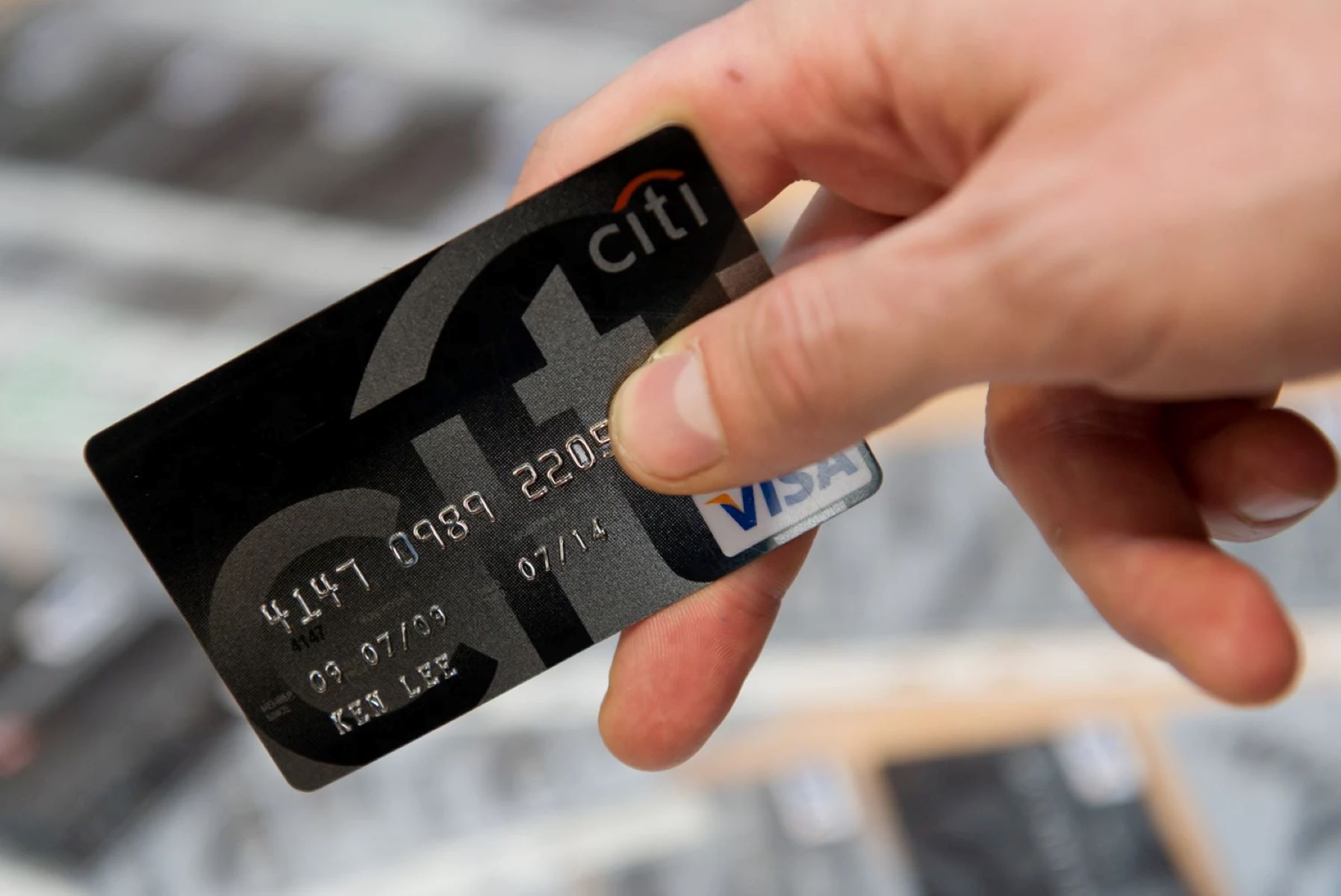

Finance
What Happens If You Wash A Credit Card
Published: November 5, 2023
Discover the consequences of washing a credit card and how it may impact your financial situation. Learn important tips on handling credit cards to avoid potential damage.
(Many of the links in this article redirect to a specific reviewed product. Your purchase of these products through affiliate links helps to generate commission for LiveWell, at no extra cost. Learn more)
Table of Contents
Introduction
Have you ever wondered what would happen if you accidentally put your credit card through the washing machine? In the fast-paced world we live in, mishaps like this can easily occur. Perhaps you absentmindedly left your credit card in a pants pocket and it found its way into the laundry. Or maybe it slipped out of your wallet and ended up in the washing machine while you were doing chores. Whatever the reason, it’s not an uncommon occurrence.
Credit cards have become an integral part of our daily lives, providing us with quick and convenient access to funds. But they are not immune to accidents, and washing them is definitely not on the list of approved activities. While it may seem like a harmless mistake, washing a credit card can have some serious consequences.
In this article, we will explore the effects of washing a credit card and the damages it can cause. We will also provide some tips on how to protect your credit card to avoid ending up in a situation where you have to deal with the aftermath of a washed credit card.
Can You Wash A Credit Card?
While credit cards are designed to withstand normal wear and tear, they are not designed to withstand the rigorous cycle of a washing machine. The materials used in credit cards, such as plastic and metal, are not meant to be exposed to water, heat, and agitation. Therefore, it is highly recommended to never intentionally wash your credit card, as doing so can cause irreversible damage.
One might think that since credit cards are often made of durable materials, they could survive a trip through the washing machine unscathed. However, credit cards are not just pieces of plastic or metal. They also contain sensitive components, such as radio frequency identification (RFID) chips and magnetic strips. These components can be easily damaged by exposure to water and heat.
Additionally, the washing machine’s agitation can cause the card to bend, crack, or break. This can render the card unusable and potentially compromise the security features of the card. It is important to remember that credit cards are not waterproof, and they can easily soak up water, leading to further damage.
It’s worth mentioning that some credit card issuers provide waterproof and durable credit cards specifically designed for outdoor or water-related activities. These cards are made with materials that can withstand water and other elements. However, even with these specialized cards, it’s important to exercise caution and avoid intentionally submerging them in water or putting them through the washing machine.
In summary, washing a credit card is not recommended. The materials, components, and mechanisms within a credit card are not built to withstand the harsh conditions of a washing machine. To avoid any unnecessary damage, it’s best to keep your credit card away from water and take proper precautions to protect it.
Effects of Washing a Credit Card
Washing a credit card can have various detrimental effects, both visible and hidden. Let’s take a closer look at some of the potential consequences of washing a credit card:
- Physical Damage: As mentioned earlier, the agitation and heat in the washing machine can cause the credit card to warp, bend, crack, or even break. This physical damage can render the card unusable and potentially compromise its security features. In some cases, the card may still work initially, but over time, the damage can worsen, making it difficult or impossible to use the card.
- Data Loss: Credit cards often contain sensitive data stored on magnetic strips or embedded chips. When exposed to water and heat, this data can become corrupted or erased, leading to a loss of important information. This can result in a compromised card that cannot be used for transactions.
- Security Risks: Credit cards may also have RFID chips that enable contactless payments. These chips can be susceptible to water damage, compromising the card’s security features. If the RFID chip malfunctions or gets damaged, it can lead to unauthorized transactions or even identity theft.
- Mold and Mildew: If a credit card is washed and not thoroughly dried, it can become a breeding ground for mold and mildew. These fungi can thrive in the damp environment and cause unpleasant odors. The presence of mold and mildew can further damage the card and make it unappealing to use.
- Replacement Costs: Should your credit card become irreparably damaged by washing, you will have to go through the process of getting a replacement card. This may involve contacting your credit card issuer, filling out paperwork, and waiting for the new card to arrive. In the meantime, you may face inconvenience and potential disruption to your financial transactions.
It is essential to remember that even if your credit card still appears to be functional after being washed, the damage may manifest over time. Therefore, it is crucial to take immediate action to mitigate any potential risks and contact your credit card issuer for guidance.
Damages Caused by Washing a Credit Card
Washing a credit card can result in various damages that can have significant ramifications. Here are some of the main damages caused by washing a credit card:
- Card Becomes Unusable: One of the most obvious damages caused by washing a credit card is rendering it completely unusable. The combination of water, heat, and agitation can cause the card to warp, break, or become severely damaged. This makes it impossible to swipe, insert, or tap the card for transactions.
- Loss of Card Data: Credit cards store data on magnetic strips or embedded chips, which can be vital for completing transactions. Washing the card can result in the loss or corruption of this data, making it impossible to retrieve important account information when making payments.
- Compromised Security Features: Credit cards are equipped with security features to protect against unauthorized use. However, washing the card can damage these features, making it easier for fraudsters to access the card’s information or clone the card for fraudulent transactions.
- Financial Loss: If a credit card is damaged beyond repair due to washing, it will need to be replaced. This can result in financial loss if there are fees associated with obtaining a new card, such as replacement fees or expedited delivery charges.
- Potential Identity Theft: In some cases, washing a credit card can compromise its security features, making it easier for thieves to steal personal and financial information. This can lead to identity theft, where criminals use the stolen information to make unauthorized purchases or open fraudulent accounts in the cardholder’s name.
- Inconvenience and Time Consumption: Dealing with the aftermath of a washed credit card can be time-consuming and inconvenient. The cardholder may need to contact their credit card issuer, fill out paperwork, and wait for the replacement card to arrive. During this time, they may face challenges with accessing funds and conducting financial transactions.
It is important to note that the damages caused by washing a credit card are often irreversible, and prevention is key. Taking proactive steps to protect your credit card from accidental washing is crucial to avoid these potential damages and the subsequent inconvenience and financial loss that can result.
How to Protect Your Credit Card
To prevent the unfortunate scenario of washing your credit card, it’s important to take some precautions and establish good habits. Here are some ways you can protect your credit card:
- Remove your credit card before laundering: Always double-check your pockets, bags, and wallets before throwing your clothes in the washing machine or dryer. Make it a habit to remove your credit card and keep it in a safe place to prevent accidental washing.
- Use a secure wallet or cardholder: Invest in a secure wallet or cardholder that will keep your credit card protected and easily accessible. Look for options with RFID-blocking technology to protect your card from unauthorized scanning or cloning.
- Avoid exposing your credit card to water: Try to keep your credit card dry and protect it from water damage. Avoid placing it near liquids, such as drinks or toiletries, and be careful when using it in situations where it may come into contact with water, such as at the beach or pool.
- Store your credit card in a safe place: When you’re not using your credit card, store it in a safe and secure location. Avoid leaving it out in plain sight where it can be easily misplaced or stolen.
- Inspect your credit card regularly: Take the time to inspect your credit card periodically for any signs of damage or wear. Look for cracks, bends, or peeling on the card, as these may signal potential issues.
- Keep contact information handy: Make sure you have the contact information of your credit card issuer readily available. In case your credit card gets damaged or lost, you can immediately reach out to them for assistance in blocking the card and obtaining a replacement.
- Use electronic payment methods when possible: Whenever possible, opt for electronic payment methods such as mobile wallets or contactless payments. These methods eliminate the need to physically swipe or insert your card, reducing the risk of damage or loss.
By following these simple steps, you can significantly reduce the chances of washing your credit card and experiencing the associated damages. Protecting your credit card ensures its longevity, security, and your peace of mind as you engage in everyday transactions.
Conclusion
While it may seem like a harmless mistake, washing a credit card can have significant consequences. The materials, components, and security features of credit cards are not designed to withstand exposure to water, heat, and agitation. Washing a credit card can result in physical damage, loss of card data, compromised security features, financial loss, potential identity theft, and inconvenience in obtaining a replacement.
To protect your credit card, it is essential to establish good habits and take proactive measures. Always double-check your pockets before laundering your clothes and invest in a secure wallet or cardholder that provides RFID-blocking technology. Avoid exposing your credit card to water and store it in a safe place when not in use. Regularly inspect your card for any signs of damage and keep the contact information of your credit card issuer readily available.
Remember, prevention is key. Taking the necessary precautions to protect your credit card can save you from the inconvenience, financial loss, and potential risks associated with washing it. By incorporating these protective measures into your routine, you can ensure the longevity and security of your credit card and enjoy a seamless and worry-free financial experience.














